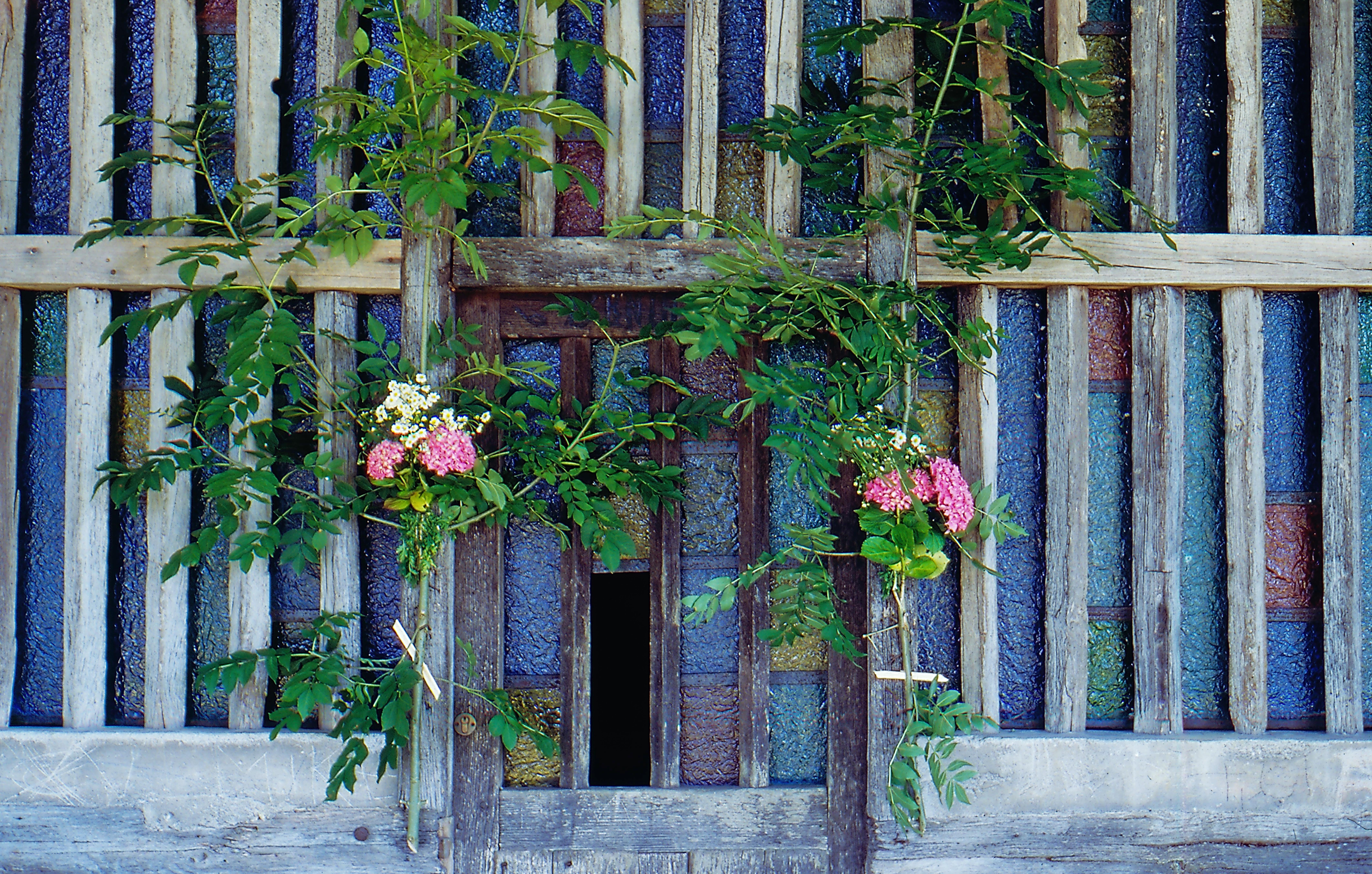Archives

Labayru Fundazioa Photographic Archive.
April and May are particularly favourable months of the year to ensure the protection of the flourishing cultivated fields and the benefits of moderate rainfall, a time marked by a set of customs associated to lopped festive trees or poplars being erected in squares and higher grounds (a practice which often extends to St John’s or patron saint festivities), the vegetable figuration of maypoles, or mayos, in human or puppet form, the curious designation or election of virginal May queens, called mayas, or the singular marriage between juvenile May kings and queens. (more…)

Preparing the Maypole, 2017. José Ángel Chasco.
Peasants today rely on commercial or mutual insurance for compensation of losses caused by hailstorms. However, ancient rites and charms are still practised to provide protection against the hazard of damage to crops, animals and people. On 3 May, the Finding of the Holy Cross, a Maypole (Mayo, in Spanish) is erected in San Vicente de Arana (Álava) to guard cultivated fields and harvests from the ravages of storms and remains in place throughout the summer until it is taken down on 14 September, the Exaltation of the Holy Cross. (more…)

St John’s hermitage in Murgoitio, 1995. Berriz (Bizkaia). José Ignacio García Muñoz. Labayru Fundazioa Photographic Archive.
Between dawn and sunrise on St John’s Day, it is customary to place an oak or ash branch decorated with a bunch of herbs and flowers on front doors of houses and hermitages dedicated to the saint. Ears of wheat would also be added to the arrangement in earlier times, and a peeled splinter inserted in the wood of the branch to make a rustic cross. St John’s oak bouquet (sanjuan-haretxa, in Basque) is in point of fact a traditional symbol of the summer solstice. (more…)

